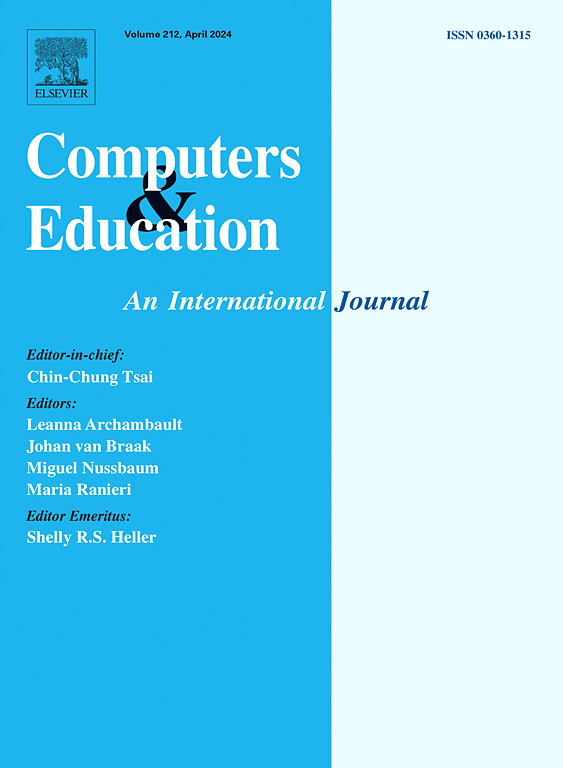Widening the Digital Divide: The mediating role of Intelligent Tutoring Systems in the relationship between rurality, socioeducational advantage, and mathematics learning outcomes
IF 10.5
1区 教育学
Q1 COMPUTER SCIENCE, INTERDISCIPLINARY APPLICATIONS
引用次数: 0
Abstract
This study examines how the effects of school socioeducational advantage and rurality upon mathematics learning outcomes, are impacted by students’ usage of the ITS platform AdaptiveMath. Activity log data from the AdaptiveMath platform was merged with school sociodemographic data from the public MySchool database. The final analytic sample comprised of 66,451 Australian high school students across 304 schools in Years 7–10, who used the AdaptiveMath ITS platform in 2023. Structural Equation Modelling was employed to examine both the direct and indirect effects of school socioeducational advantage and rurality on student usage of the AdaptiveMath platform, and the resulting student learning outcomes.
This study finds marginal, but statistically significant relationships between ITS usage and learning outcomes, and the socioeducational advantage and rurality of a student's school. Students who are from more affluent and urban schools use the ITS platform earlier in their school career, for more years, and have higher learning outcomes than their rural, less affluent peers. Further, ITS usage was found to mediate the relationship between socioeducational advantage and rurality, such that it amplified the positive effects of socioeducational advantage, and the negative effects of rurality, upon learning outcomes.
The results suggest that introducing ITS platforms into Australian mathematics teaching will not reduce achievement gaps between affluent and disadvantaged schools. Rather, a Matthew Effect may be observed, whereby students attending privileged schools use ITS platforms more effectively, thereby contributing to an even greater disparities in learning outcome.
扩大数字鸿沟:智能辅导系统在乡村性、社会教育优势和数学学习成果之间关系中的中介作用
本研究考察了学生使用ITS平台AdaptiveMath对学校社会教育优势和乡村性对数学学习成果的影响。来自AdaptiveMath平台的活动日志数据与来自MySchool公共数据库的学校社会人口统计数据合并。最终的分析样本包括来自304所学校7-10年级的66,451名澳大利亚高中生,他们在2023年使用了AdaptiveMath ITS平台。本文采用结构方程模型来检验学校社会教育优势和乡村性对学生使用AdaptiveMath平台的直接和间接影响,以及由此产生的学生学习成果。本研究发现,智能交通系统的使用与学习成果、学生所在学校的社会教育优势和乡村性之间存在边际关系,但在统计上具有显著意义。来自富裕学校和城市学校的学生在他们的学校生涯中使用ITS平台的时间更早,时间更长,并且比他们在农村,不富裕的同龄人有更高的学习成果。此外,我们发现ITS的使用可以中介社会教育优势和乡村性之间的关系,从而放大社会教育优势对学习结果的积极影响,以及乡村性对学习结果的消极影响。结果表明,将ITS平台引入澳大利亚数学教学不会缩小富裕学校和弱势学校之间的成绩差距。相反,可以观察到马太效应,即就读于特权学校的学生更有效地使用ITS平台,从而导致学习结果的更大差异。
本文章由计算机程序翻译,如有差异,请以英文原文为准。
求助全文
约1分钟内获得全文
求助全文
来源期刊

Computers & Education
工程技术-计算机:跨学科应用
CiteScore
27.10
自引率
5.80%
发文量
204
审稿时长
42 days
期刊介绍:
Computers & Education seeks to advance understanding of how digital technology can improve education by publishing high-quality research that expands both theory and practice. The journal welcomes research papers exploring the pedagogical applications of digital technology, with a focus broad enough to appeal to the wider education community.
 求助内容:
求助内容: 应助结果提醒方式:
应助结果提醒方式:


